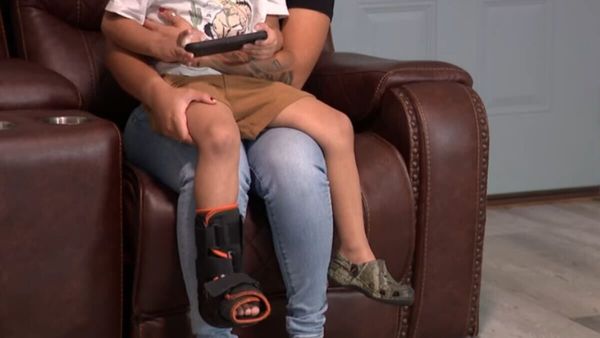
More than 2,000 unhoused people died in Los Angeles in 2023, meaning an average of nearly six deaths a day of people living on the street or in shelters in the nation’s most populous county.
The numbers reveal an escalating humanitarian emergency as the housing crisis and drug addiction epidemic collide, with victims found in tents, encampments, vehicles, parks, alleys, vacant lots, underpasses, bus stops and train stations.
An exclusive review of LA county medical examiner data obtained by the Guardian shows the department logged a total of 11,573 deaths of unhoused people over the last decade. Deaths have consistently increased every year.
In 2023, 2,033 people died, a staggering 291% increase from the 519 cases recorded in 2014 and an 8% increase from the 1,883 fatalities in 2022.
The data is an undercount as the medical examiner only has jurisdiction over deaths considered violent, sudden or unusual, or where the deceased has not recently seen a doctor, meaning the scale of the crisis is greater than what’s captured in the data.
The LA county public health department does its own tracking, and a spokesperson said its researchers estimate there are roughly 20% more deaths in its database due to its more comprehensive sources and methodologies. The health department has not yet released 2023 data.
“Every single death takes a toll on you,” said Rebecca Chavez, 41, who is part of a community of unhoused people that suffered two recent losses in the San Fernando Valley region of LA. Both victims had lived in encampments with her over the years and she considered them family, she said. One died of an overdose while she was nearby, and she said she was haunted by the memory of being unable to revive him: “I don’t know how I’ll ever recover.”
The 2023 autopsy reports illustrate the myriad challenges facing unhoused people: the rise in fentanyl, untreated mental and physical illness, a lack of access to affordable housing and high rates of violence. A man was arrested last year for allegedly targeting and killing three unhoused men in LA who were sleeping.
The alarming death rate comes as LA residents continue to fall into homelessness faster than people on the streets are moved into housing. The county now has more than 75,500 unhoused people, according to the 2023 point-in-time survey, a rough estimate. LA also has one of the highest rates in the nation of people living outside, with 73% of its unhoused population classified as “unsheltered”, meaning living in tents, cars and makeshift structures. In New York City, by comparison, an estimated 5% of the unhoused population is unsheltered, with most in emergency shelters.
The data analysis laid bare other trends:
Over the past decade, 6,720 deaths (58% of deaths) were classified as “accidental”, including overdoses and traffic deaths; 3,157 (27%) were ruled “natural”, including heart disease and pneumonia; 801 (7%) were homicides; and 444 (4%) were deaths by suicide.
The data shows a dramatic increase in fentanyl-related deaths over time, with 30 cases listing the powerful opioid as the cause of death in 2018; 255 in 2020; and 633 in 2022. For 2023, the medical examiner has logged 575 fentanyl deaths so far, but it typically takes three months for drug-related deaths to have their causes finalized, and hundreds of deaths are still under investigation.
Black Angelenos make up only 9% of the overall county, but accounted for 25% of all unhoused deaths from 2014 to 2023 (2,945 deaths). Latinos made up 35% of deaths (4,062 cases); white people comprised 35% (4,052 cases); and Asian Americans comprised 2% (198 cases).
The most common age at death was 55 to 60, though there were 29 children under the age of 10, and 63 people over 80 who died while unhoused since 2014.
“We’re seeing older adults throughout the county who are just unable to pay rent,” said Dr Absalon Galat, the medical director for the county’s mobile clinic program. People in their 70s are unable to afford housing after retirement and end up living in vehicles or on the streets, he said: “Some say: ‘I’m just going to live here temporarily’ … but then they get stuck out there. Their medical problems are the last thing they think about. They’re trying to survive in this new environment – it’s: ‘How do I get warm at night? How do I get food?’”
Chronic diseases that they were managing before homelessness can go untreated and become life-threatening, Galat said.
“Almost everybody on the street knows somebody who has overdosed – a friend or someone in their community. So death is always present,” said Brett Feldman, the director of USC street medicine and who also treats unhoused patients. “Nobody wants to be addicted to fentanyl. They’re usually trying to escape their reality and the suffering on the street, and many started using drugs to deaden the pain of homelessness.
“On a daily basis, they might be using the same thing that killed their friend and not knowing when they might be next,” Feldman added. When his staff gathers twice a month for team meetings, they have a moment of silence for patients they have lost; these days, they are honoring five to 10 people a month.
Victor Hinderliter, LA county health services’ director of street-based engagement and mobile clinics, said more frequent and severe weather events are also endangering people outside, including storms, flooding, wildfires, high winds and heatwaves.

In Van Nuys, just north of Los Angeles, a group of unhoused residents mourned the death of Anjileen Swan last month. Swan, 54, had long struggled with homelessness and had repeatedly been hospitalized last year for congestive heart failure and other problems, her friends said.
“I took care of her, and there were a lot of people looking out for her,” said Giselle Harrell, 40, who lives in a tent in the area. “But she needed a lot of help with everything.”
Swan’s friends said she had a housing placement at the start of last year, but was evicted for unclear reasons. Although she later got a bed in a motel shelter program, she lost that spot, too, amid her hospitalizations, they said.
In a video filmed by community organizer Carla Orendorff in October, Swan is in her tent as Los Angeles police department and city workers prepare to sweep her area, which was being subjected to a targeted enforcement effort. Swan says that she has just gotten out of the hospital from open-heart surgery and can’t move her stuff in the 15-minute timeframe they have cited. “I’m still trying to work with the people who housed me to begin with and see why they can’t put me back inside. They want me to start all over,” she says.
On 11 January, another organizer records Swan’s conversation with an outreach worker, in which she says she’d been struggling in the frigid weather: “I thought I was gonna die. I was crying, like I can’t do this.”
Five days later, on 16 January, she died on a nearby street. The medical examiner has not yet released her cause of death.
“She was dealing with an incredible amount of stress,” said Orendorff. “It’s really tough, because she was an elder a lot of us looked up to.”
Harrell said that Swan was known for bringing clothes and food to others on the street before she became sick, but the crackdown on encampments had dispersed their community: “With the displacement and sweeps, we can’t catch a break. They are isolating and killing more people.”
Chavez said Swan would watch her dog when she had appointments and looked out for her over the years. She called her “Mama Green Eyes”.
Chavez added that she had grown accustomed to trying to revive people who have become unconscious: “It’s become normal to me, but nobody should ever have to be used to this.”







